I’m going to clarify up front, the Nike Vapormax 2020 Flyknit is a casual shoe. I confirmed that with Nike. It’s a lifestyle shoe. But, it looks a lot like a running shoe. And when something looks like a running shoe, I want to run in it. So I ran in them.
And since reviewing shoes is my job, occasionally I can sneak in a shoe that doesn’t really fit the mold. I did it recently when I reviewed the adidas Yeezy Boost 380. What follows are the pros and cons of my experience wearing and running in both the Nike Vapormax 2020 Flyknit and the Nike Vapormax 2020 Flyknit Medal Stand. The results surprised me and I think they’ll surprise most of you too.
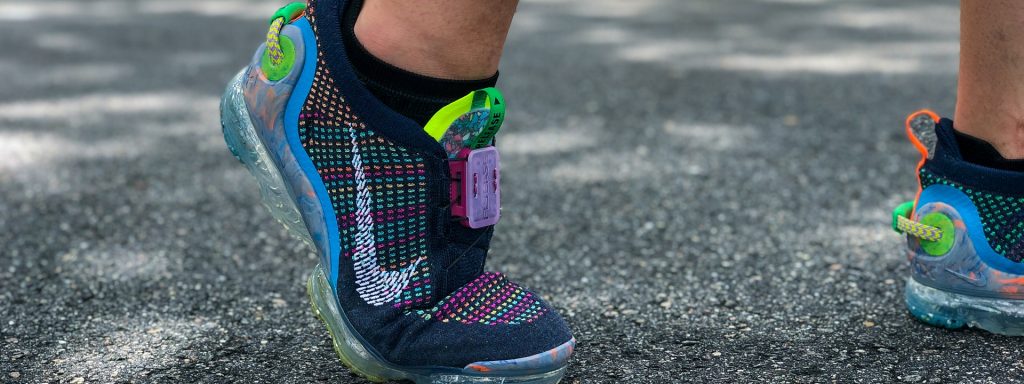
Pros
- Cushion. The air sole feels a lot like the Air Max models of years past and not like previous Vapormaxes. You get full length impact protection without feeling gummy. It’s the reason why, when I first put them on, my initial thought was “I can run in these”. The impact protection is at a level that works for running. I can run 5-6 miles at a time in these bad boys and my legs don’t take a beating.
- Flyknit upper. I appreciate Flyknit uppers for their flexibility and breathability. Though Nike uses recycled polyester yarns on the Vapormax 2020 Flyknit, it’s still got the light, stretchy feeling I expect from Flyknit. I didn’t get any hotspots while running and the upper did a good job molding to my foot.
- Comfort. Flyknit alone typically provides a very comfortable upper. But the Vapormax 2020 Flyknit integrates what is best called a heel bootie. While I’m sure part of its purpose is to protect the wearer from the FlyEase cables, it cups the heel the same way a ¾ bootie cups my midfoot and forefoot. The softness and padding at the achilles area is better than on most Flyknit products. You can safely wear no show socks with these and avoid blisters on your heels. I hope Nike running shoes start to incorporate the heel bootie.
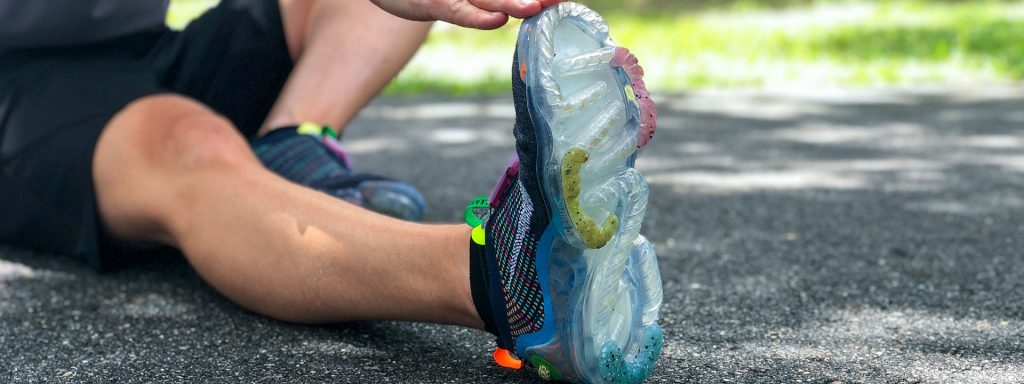
- Traction. Remembering the original Vapormax, I thought the traction would be a slappy, plastic nightmare. Luckily, the designers did their best to fix that. The nubs that are part of the air unit feel slightly tackier and softer than the original version. This is especially helpful for wet surfaces. Nike also placed two sections of regrind rubber at the forefoot and one at the heel. It’s consistency is similar to Nike’s traditional rubber compounds and adds long term durability and protection. It’s not amazing traction but I didn’t slip or skate. The Vapormax 2020 grabs the ground much better than previous Vapormax models.
- Breathability. The Flyknit lets in a lot of air and my feet felt as cool as possible given the hot summer weather. The breathability is right in line with similar Flyknit models so it translates well to running.
- Sizing. The length is right on target and going true to size worked well. Wide footers get more room than they did in the original Vapormax. Sometimes I wished the FlyEase system had a couple extra notches for tightening but once your foot starts to expand (while running or walking) it’s easier to dial in the fit.
- Recycled materials. The Vapormax 2020 Flyknit features 50% recycled content by weight. The distinct look of the recycled parts is obvious. It’s Nike marketing in action but Nike makes it look good. Nice to see Nike trying to reduce the giant carbon footprint of shoe production.
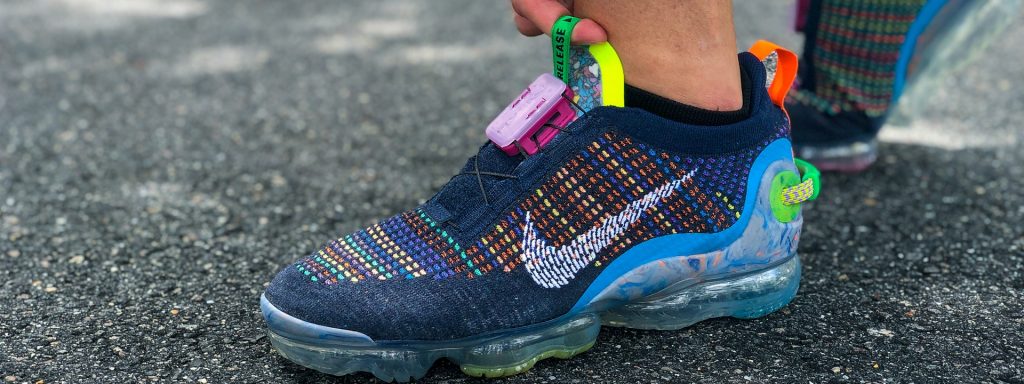
Cons
- FlyEase implementation. The little box on the tongue with ripcord at the back of the foot looks cool but doesn’t work very well. Pulling up on the pull tab attached to the tongue box should disengage the FlyEase. It doesn’t always work. And just putting on the shoe you can accidentally disengage the system. Facepalm. It also doesn’t reengage very well. Sometimes there’s an audible click, sometimes not. I’ve got two pairs and the behavior is the same on both. It just takes too much effort to dial in the fit with this version of FlyEase. Inconsistent equipment is a big no-no in running so Nike needs to go back to the drawing board here.
- Tongue. The tongue utilizes a cool, exposed recycled foam that for some reason is backed by synthetic suede. It should be backed with the same mesh used on the interior of the shoe. The synthetic suede can fold at the edges and require adjustments. And along with the almost two inch long plastic box sitting on the top of your foot, the top of your foot can be uncomfortable. As your foot expands while running or during all day wear you can start to feel the tongue and box too much.
- Fit. Because the FlyEase system is so finicky, getting the fit perfect is really hard. Fit also varies between the two models I own. The Vapormax 2020 Flyknit with its hard TPU heel counter and my Vapormax 2020 Flyknit Medal Stand with it’s crater foam heel counter feel very different in terms of width, flexibility, and comfort. The different insoles between the two models also change the fit.
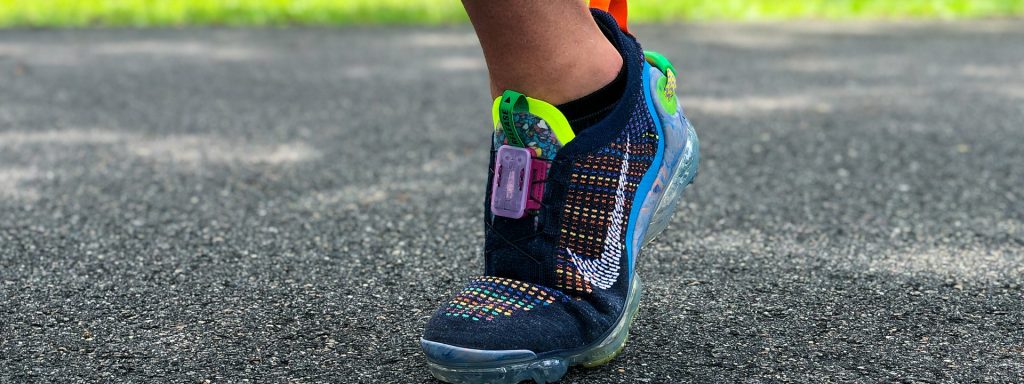
- Insole. The regular Vapormax 2020 Flyknit has what appears to be a recycled version of a typical Nike running insole. It feels like Ortholite but it’s thin. The Vapormax 2020 Flyknit Medal Stand has the same recycled ZoomX insole from the Space Hippie line. It’s much thicker and thus the shoe fits much tighter. It’s the same difference as removing a stock insole and adding an orthotic. The Medal Stand version’s midsole is more comfortable, but it’s slicker. Running in it is not nearly as efficient as in the regular Vapormax 2020. I’m thinking once the ZoomX insole forms to your foot it will be a better option for all day comfort. Plan for break in time.
- Heel counter. As mentioned above, the heel counter on the regular Vapormax 2020 is rock hard TPU that extends to the midfoot. It’s a bit much for a running shoe. It adds too much weight and stiffness to the back half of the shoe. I much prefer the recycled crater foam on the Vapormax 2020 Medal Stand. It feels more natural.
- Sound. While not quite the click-clack of cleats on pavement, walking or running in the Vapormax 2020 is pretty loud. The transition from heel to forefoot is a little uneven and you can hear as your foot hits the floor. The transition didn’t bug me during runs but is cumbersome compared to today’s running shoes. Modern rocker geometry works wonders (for example, the Nike Infinity Run Flyknit).
- Price. The Vapormax 2020 Flyknit is $220 and the Vapormax 2020 Flyknit Medal Stand is $250. Those prices should be reserved for carbon fiber plate wielding race day running shoes. The price point is untenable for an everyday running shoe.
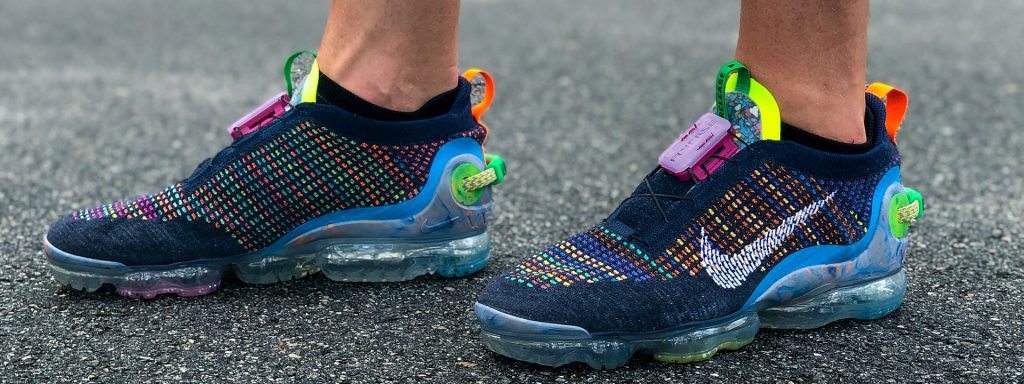
Overall
I ran in them, and while the Nike Vapormax 2020 is not a running shoe, it can be of service if needed. The heel to toe transition is a little funky but the upper’s comfort and the air sole unit’s impact protection do an adequate job once you get up to speed. It’s the kind of shoe that can serve as a runner on vacation when you need to conserve packing space.
The Nike Vapormax 2020 Flyknit is a fun casual shoe that can handle all day wear. But at $220 or $250, it’s only worth it if you really like the silhouette. If you want a better pair of running shoes, read our Running Shoes Reviews where you can find a high performing option at about half the price.
You can shop the entire assortment of Vapormax 2020 at Nike.
Where to Buy the Nike Vapormax 2020 Flyknit
Watch Chris’ Nike Vapormax 2020 Flyknit Review
Nike was not given any editorial control of the review. This review is based on our weartesters’ experiences using the shoes for running and casual wear.

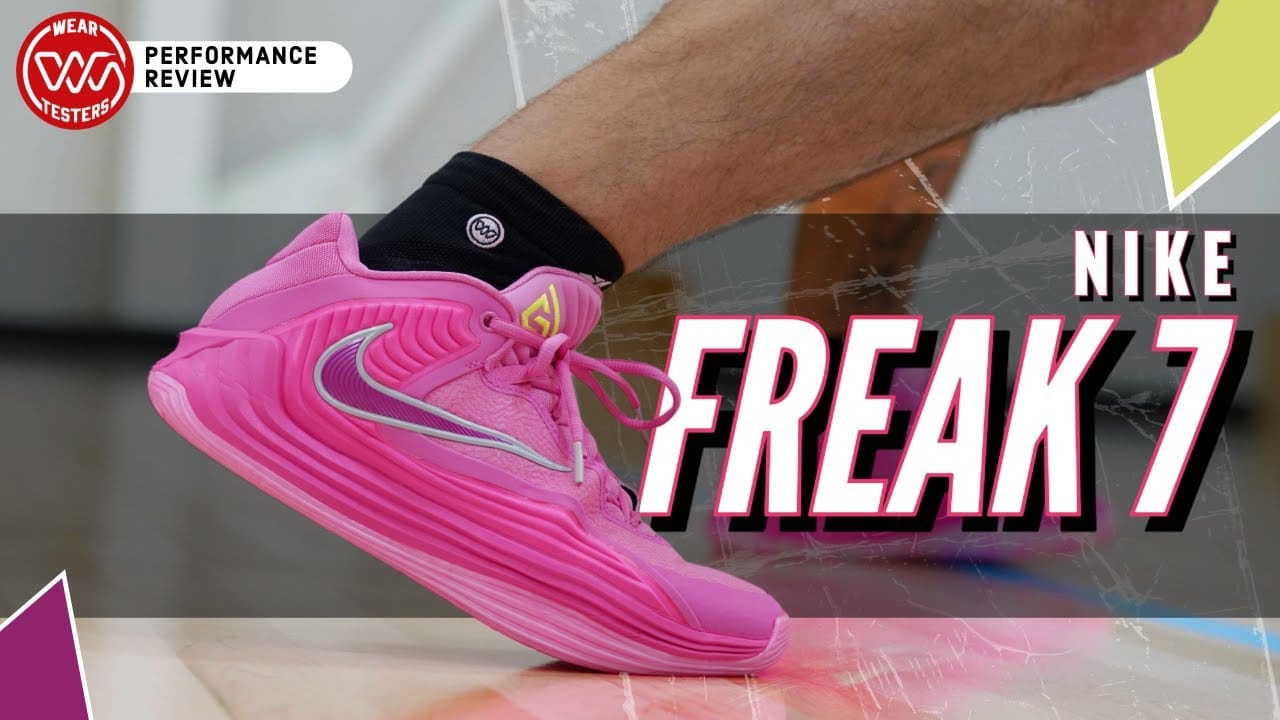
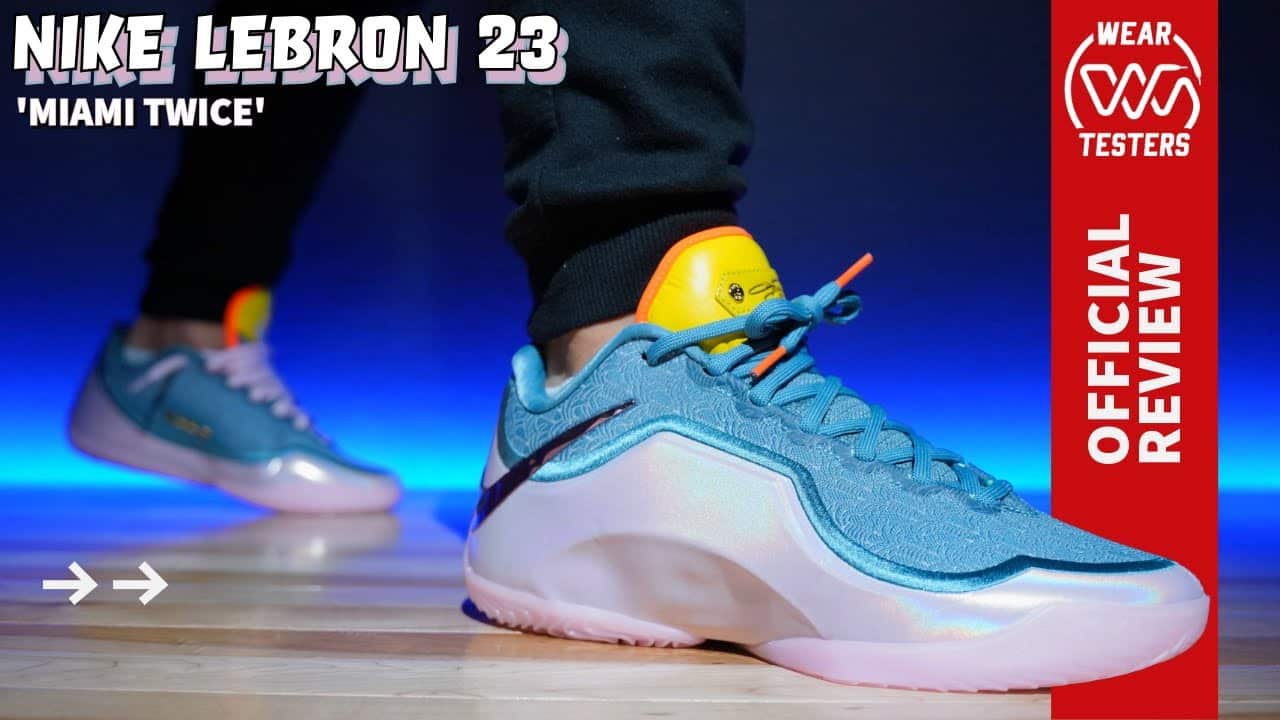
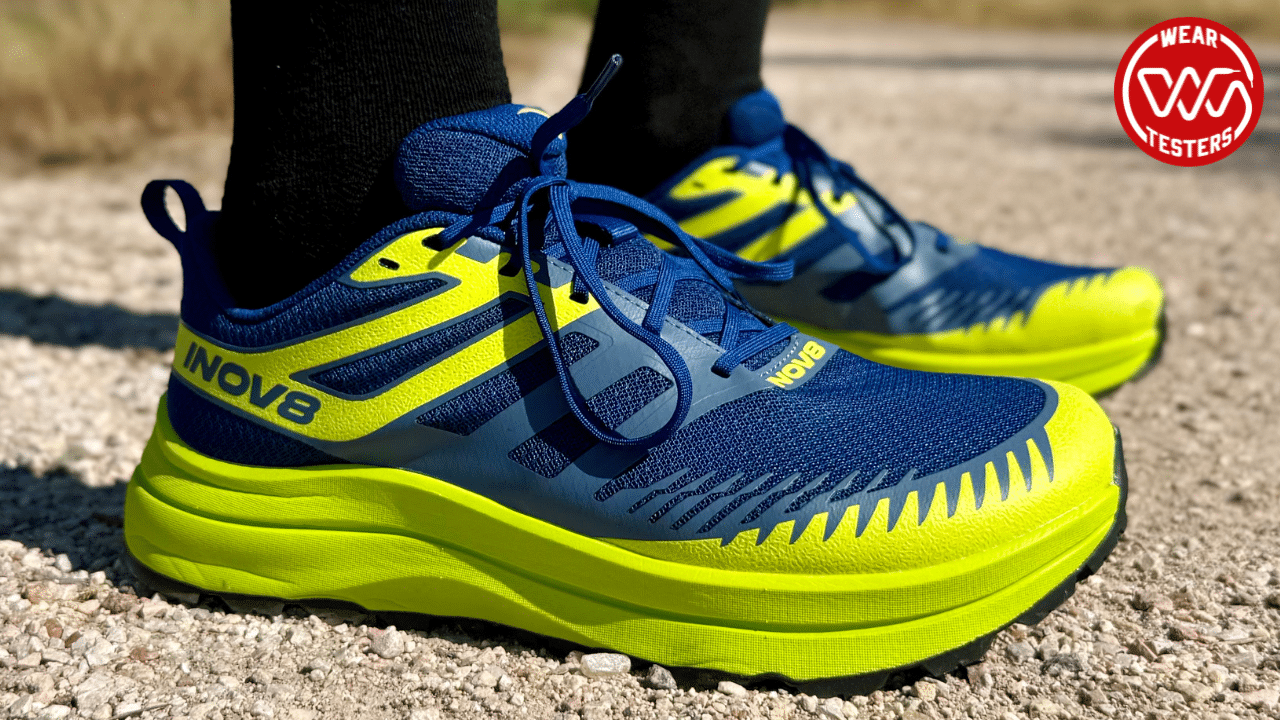
The worst shoes ever I buy twice ond have the same problem worthless